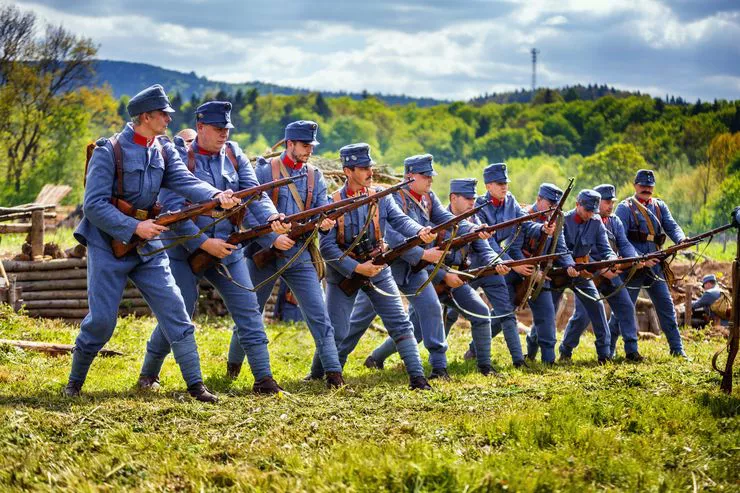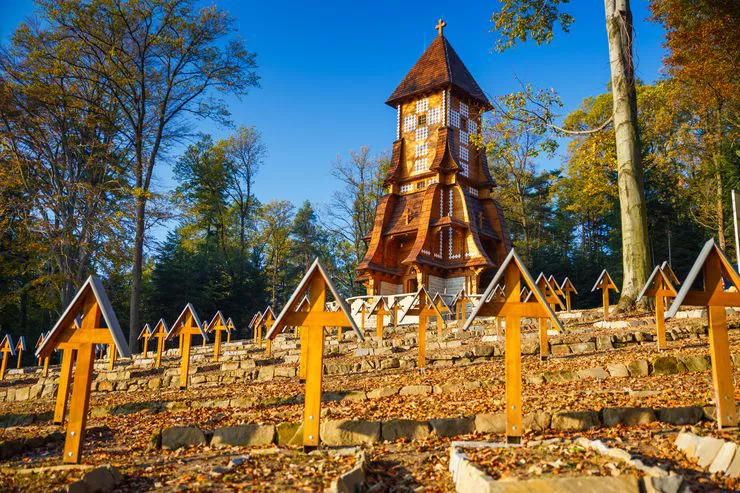Today, the most visible memento of the battles fought 110 years ago are around 400 First World War cemeteries, where the soldiers were treated in equal manner and lain with dignity on their graves independent of the side they fought on or religion they followed. The dividing line was honoured, so the soldiers of the Russian Imperial Army lie in their section, while those who fought for the Austro-Hungarian Empire in theirs. In the spirit of true brotherhood and ecumenism, you find crosses, both of Western and Orthodox rites, interspersed with Stars of David and a rare Muslim crescent moon in both parts of some cemeteries. And there are Polish names on the graves of all the fighting armies, as at the time Poland had been partitioned for over 100 years by Russia, Prussia, and Austria.
The belligerent empires had long been preparing for the decisive clash, so they fortified their borders. As Austrians considered Kraków a border garrison city, disregarding its royal history, they turned it into Kraków Fortress with Wawel Castle on its hill turned into a Citadel Fortress. In and around the city, they built over 200 elements of the fortress, ranging from major forts (over 40, incl. the picturesque Fort 31 “Benedykt”) to infantry redoubts. More than 100 of them still stand among greenery, and can be visited along the Kraków Fortress Trail waymarked with the yellow and black colours of Austro-Hungary along over 100 kilometres on both sides of the Vistula.
The First World War is strongly present in the collective memory of Małopolska, and many local groups, whether reenactors, guides, or just buffs, cherish that memory and produce plenty of online content, also in English. Planning your visit, it is certainly a great idea to browse through it and contact those whose interests are closest to yours. You can also click here for more information.















